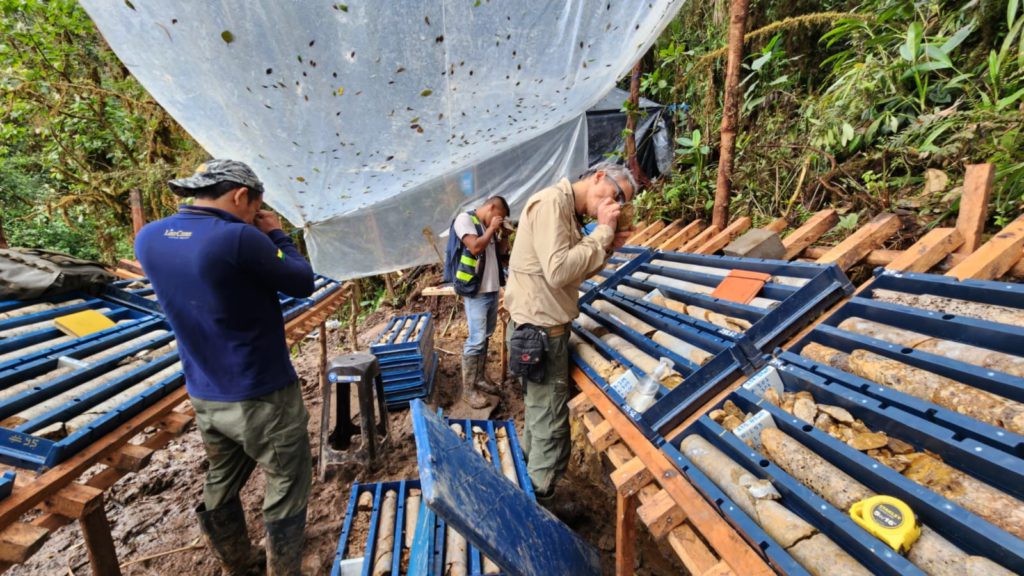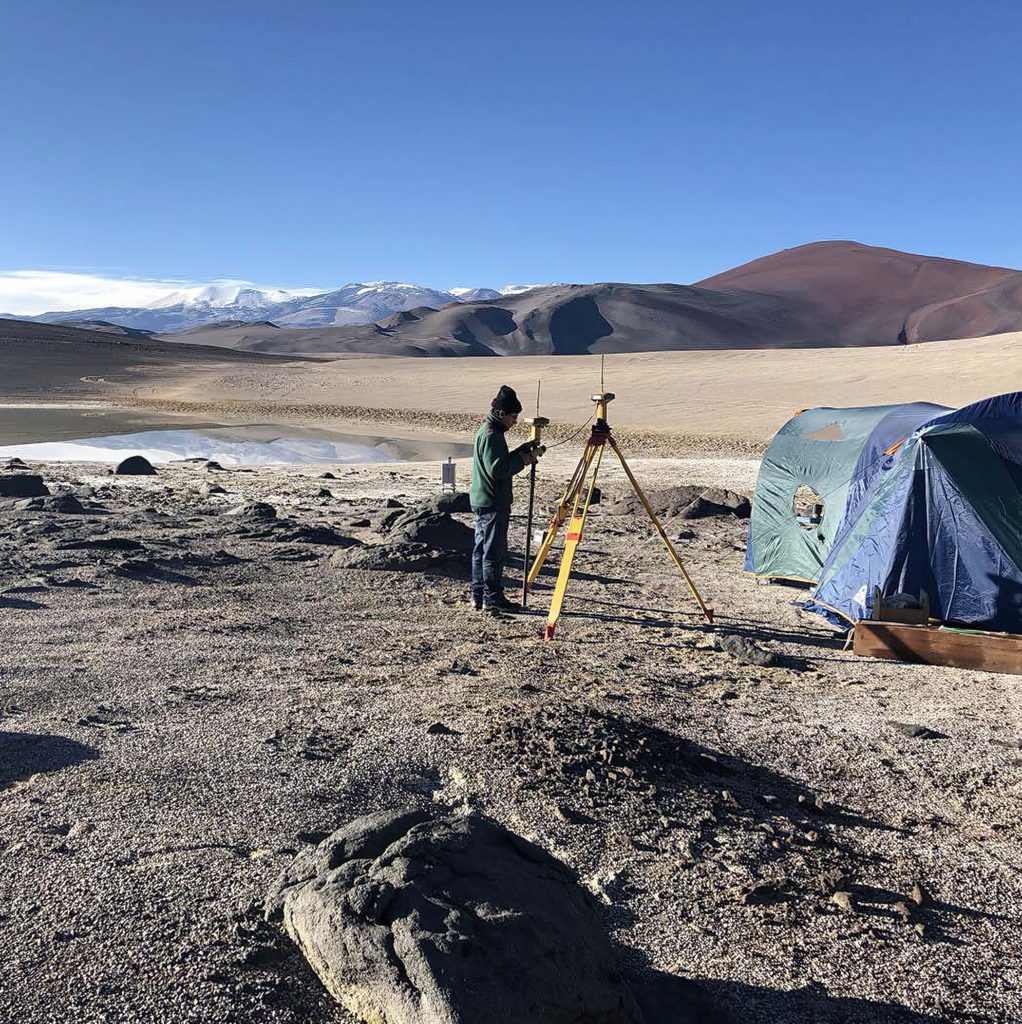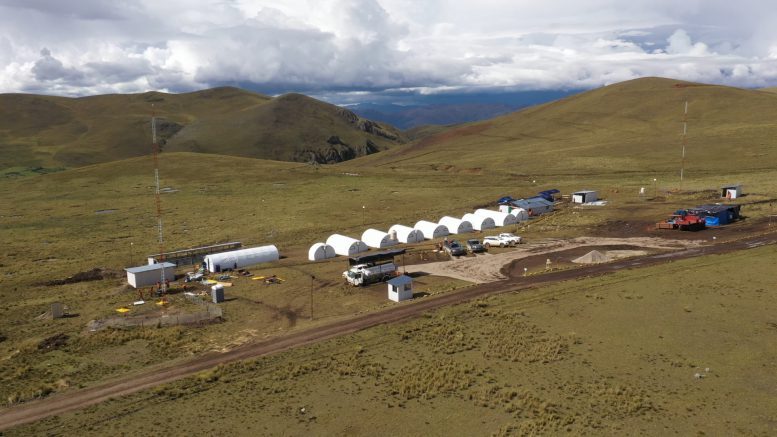From Botswana to Ecuador, Spain and Jamaica – it may sound like a travel destination bucket list, but these are just some of the places these eight juniors are exploring for precious, base and energy metals.
Aurania Resources
Aurania Resources (TSXV: ARU; US-OTC: AUIAF) claims to have discovered the “lost city” of Logrono de los Caballeros, a historic gold camp from the time of the Spanish conquistadors in the 16th and 17th centuries. The site containing alluvial gold is along the Rio Santiago downstream of Aurania’s 2,078 sq.-km Lost Cities-Cutucu project in southeastern Ecuador, where it hopes to find the source of the gold.
Logrono de los Caballeros, one of seven gold mines in the area that were mined by the Spanish, was abandoned in 1603 after an epidemic that killed most of the native workers.
The Toronto-based exploration company is led by Keith Barron, who is credited with Aurelian Resources’ Fruta del Norte gold discovery in 2006, 100 km south of Aurania’s Lost Cities-Cutucu project. Aurelian sold Fruta del Norte to Kinross Gold (TSX: K; NYSE: KGC) for $1.2 billion in 2008. The property is now being mined by Lundin Gold (TSX: LUG).
The discovery of Logrono de los Caballeros was facilitated by Metron Inc. of Reston, Va., which used Bayesian search theory and a combination of historical, geological, geochemical and geophysical data to generate probability maps for pinpointing the target. The historical data included historical records and maps from the Apostolic Library of the Vatican, the Archivo General de Indias in Seville, Spain, and other sources.

Examining cores at Aurania’s Tatasham copper porphyry target in Ecuador. Credit: Aurania Resources
Bayesian theory was previously used in 1988 to discover the location of the SS Central America, a ship that capsized in a hurricane off the coast of South Carolina with $1 billion worth of gold in 1857.
Aurania is also exploring for copper at its Tatasham porphyry target near the western margin of its Lost Cities – Cutucu concession area and conducting a four-hole drill program to test the largest geophysical feature identified in an earlier airborne geophysical survey. The company was still waiting for assay results from the first two holes at press time.
In December, Aurania closed a non-brokered private placement for gross proceeds of $1.9 million to fund its exploration activities.
Aurania Resources has a market capitalization of $41 million.
C3 Metals
Toronto-based C3 Metals (TSXV: CCCM; US-OTC: CUAUF) has reported positive results from a recently completed 73-hole, 20,070-metre drill program at its 268-sq.-km Jasperoide copper-gold project in southern Peru.
The two-phase drill program defined a 650-metre-long skarn body in the project’s Montana de Cobre zone including one intersection of 63.9 metres at 1.19% copper from 58.8 metres below surface.
Jasperoide is located in Peru’s prolific, high-grade Andahuaylas-Yauri porphyry-skarn belt, 35 km north of Hudbay Minerals’ (TSX: HBM; NYSE: HBM) Pampacancha and Constancia mines and 40 km east of Chinese controlled MMG’s Las Bambas mine.
In a press release in November, C3 Metals’ president and CEO Dan Symons noted that the Montana de Cobre zone has been drilled at roughly 50-metre spacings over about 90% of the skarn target. Drilling has confirmed that copper grades increase significantly at depths below 50 to 75 metres, with one hole returning 20.1 metres of 5.83% copper and 0.87 gram gold per tonne from 96.3 metres depth.
Next steps include metallurgy testing on the different material types within the oxide skarn body at the Montana de Cobre zone to evaluate recoveries, acid consumption and the characteristics of the copper and gold mineralization.
C3 Metals also has five mineral exploration licences covering 207 sq. km of highly prospective copper-gold terrain along Jamaica’s Crawl River Fault zone. In November, the company announced it had intersected multiple zones of porphyry and epithermal style copper-gold-silver mineralization in drilling at its Bellas Gate project. As of late January, the company was awaiting results from a 25-hole, 5,000-metre diamond drill program at its nearby Arthur’s Seat project where rock chip assays of up to 58.1 grams gold per tonne, 16.5% copper and 4,890 grams silver were previously reported. At its Main Ridge project, 15 km west of Arthur’s Seat, the company confirmed multiple gold targets in January, and reported rock chip assay results of up to 35.8 grams gold per tonne from a mapping and sampling program.
C3 Metals also has a 2% royalty interest in Cascade Copper’s Rogers Creek copper-gold project 90 km northeast of Vancouver.
C3 Metals has a market capitalization of $30 million.
Clean Tech Lithium
A scoping studyreleased in January by Clean Tech Lithium (LSE: CTL) for its Laguna Verde project in Chile estimates annual production of 20,000 tonnes of battery grade lithium carbonate and a mine life of 30 years. Located in the Chilean slice of South America’s Lithium Triangle, the property is adjacent to a paved highway and about 352 km east of the Chilean port of Caldera.
A resource estimate of 1.5 million tonnes of lithium carbonate equivalent, more than half of which is in the measured and indicated categories, was based on a well drilling program encountering grades averaging 206 mg/L and as high as 409 mg/L at depth.

Clean Tech Lithium’s Laguna Verde project in Chile. Credit: Clean Tech Lithium
The scoping study estimated a capital cost of $383.6 million, an after-tax net present value (NPV) of US$1.8 billion, an internal rate of return (IRR) of 45.1% and a payback period of less than two years. The company hopes to be in production by late 2025 using direct lithium extraction (DLE) technology, which allows for the extraction of lithium from the brine without the need for evaporation. Sourced from SunResin New Materials of China, the technology separates the lithium from the brine without depleting the aquifer.
A prefeasibility study is underway and scheduled for completion in the second half of this year.
Clean Tech Lithium has two additional lithium properties in Chile: the Francisco Basin project located 100 kilometres south of Laguna Verde, and the Llamara project much further south.
The Francisco Basin project has an inferred resource of 500,000 tonnes of lithium carbonate equivalent and an average grade of 305 mg/L based on 34 brine samples collected from the aquifer zone.
The company announced the receipt of exploration licences for its greenfield Llamara project on Feb. 2 along with plans to begin a drill program on the 344-sq.-km property by the end of the month. It also plans to list on the Australian Stock Exchange.
CleanTech Lithium has a market capitalization of £74 million.
Denarius Metals
Denarius Metals (TSXV: DSLV; US-OTC: DNRSF) announced an $8.3-million rights offering in January to explore at its 100%-owned Lomero-Poyatos polymetallic project in Spain’s Iberian Pyrite Belt.
The Toronto-based junior intends to use the funds for drilling, with the aim of completing an updated resource estimate and preliminary economic assessment (PEA) for Lomero-Poyatos.
A September 2022 initial estimate gives an inferred resource of 10.6 million tonnes grading 0.45% copper, 1.02% zinc, 0.41% lead, 21 grams silver per tonne and 2 grams gold, containing 48,000 tonnes of copper, 109,000 tonnes of zinc, 44,000 tonnes of lead, 7.4 million oz. of silver and 700,000 oz. of gold. The estimate was based on assay results from an 83-hole, 26,000-metre drill program completed last year.
The Lomero-Poyotas deposit is located in the northeast part of the pyrite belt, which extends 230 km from Seville in southern Spain to the Atlantic coast south of Lisbon and is reputed to be the largest concentration of massive sulphides in the world.
In November, Denarius extended its focus on Spain by entering into a definitive option agreement with Europa Metals (AIM: EUZ) to acquire up to an 80% interest in Europa subsidiary Europa Metals Iberia, which holds the Toral zinc-lead-silver project in northern Spain.
Denarius can earn 51% ownership of Toral by spending US$4 million on exploration over a three-year period, completing a PEA, and applying for a mining licence by July 31, 2023. The option to acquire an additional 29% equity interest is conditional on Denarius delivering a prefeasibility study and making a cash payment of US$2 million to Europa within a 12-month period following the closing of the first option.
Denarius is also active in Colombia, where it recently completed an initial drill program of 37 holes totalling 6,699 metres at its Guia Antigua silver-gold project and has started work on a resource estimate for its Zancudo gold project.
Denarius Metals has a market capitalization of $9.8 million.
Emergent Metals
In January, Emergent Metals (TSXV: EMR, US-OTC: EGMCF) announced the discovery of a new porphyry and skarn exploration target by joint venture partner Kennecott Exploration, a subsidiary of Rio Tinto (NYSE: RIO), at its New York Canyon property in Nevada.
The New York Canyon property, located 48 km southeast of Hawthorne, Nev., consists of two nearby blocks of claims with historical resources of copper, molybdenum and zinc, as well as gold and silver. The new target, called Emma, is located in Emergent’s north block of claims 1.6 km south of the historic Santa Fe Mine, which produced 345,499 oz. of gold and 710,629 oz. of silver from 1989 to 1995. Three other known porphyry and skarn targets are located in Emergent’s south block of claims.
Emergent signed an earn-in agreement in February 2020 giving Kennecott an option to earn up to a 75% interest in the property contingent on US$22.5 million of exploration expenditures.
Kennecott, which spent US$5.2 million on the property by year-end 2022, plans to test the Emma porphyry-skarn target with a 700-metre drill hole this quarter, with further drilling during the remainder of the year depending on assay results. Drilling is also planned in the south block of claims to test the possible extension of copper mineralization at its Copper Queen target.
New York Canyon is one of 10 properties in the Emergent portfolio, six of which are located in Nevada. The remaining four properties, including Casa South, adjacent to Hecla Mining’s Casa Berardi gold mine, are located in Quebec. In January, the company reported it hit visible gold in two of five initial holes drilled at its Trecession project in Quebec.
Emergent’s business model is based on applying modern geophysics and other advanced exploration methodologies to undervalued assets, and monetizing them through joint ventures, option agreements, outright sales and other business transactions.
Emergent Metals has a market capitalization of $5.2 million.
Global Atomic Corp.
Global Atomic Corp. (TSX: GLO; US-OTC: GLATF) is planning to complete project financing for its Dasa uranium project in the Republic of Niger by the end of the second quarter.
The fully permitted Dasa project “is the highest-grade uranium deposit currently under development in Africa and is expected to be in the lowest cost quartile among global uranium mines,” said president and CEO Stephen G. Roman in a release.
The company signed a definitive agreement with a major Western utility in January for the supply of up to 2.4 million lb. of U308 within a multi-year delivery window beginning in 2025 for a value of US$140 million.
Global Atomic had planned to close a public offering for $100 million in mid-February, however, it decided to delay the financing after a court ordered its local subsidiary to cease exploration activities. The court also issued an order related to Dasa’s 2020 environmental and social impact assessment. Global Atomic appealed the orders and on Feb. 24 announced the Appeals Court had ruled in its favour. The company says the groups that sought the order have been lobbying the government on several issues, including how it uses royalty revenue to the price of onions, and said that the government was the intended target.
The company is continuing talks on the debt portion of project financing and expects to release news later this quarter.
Global Atomic hopes to begin extracting uranium bearing ore by the end of this year. A 2021 feasibility study pegged initial capital costs at $208 million.
A 2019 report outlined a combined open pit and underground indicated resource of 101.6 million lb. of eU308 in 26.3 million tonnes grading 1,752parts per million (ppm), and an inferred total resource of 87.6 million lb. of eU308 in 22.3 million tonnes grading 1,781 ppm. However, Global Atomic expects assay results from a recent 16,000-metre drill program to upgrade a significant amount of inferred resources to the measured and indicated categories.
The Dasa feasibility study outlined a 12-year mine life representing approximately 20% of the known deposit, with a total capital cost of US$345 million.
The company plans to begin plant construction before the end of the second quarter, but in the meantime it has a memorandum of understanding with Orano Mining (formerly Areva Mines) to process uranium ore at a plant 135 km north near Arlit.
In addition to Dasa, Global Atomic owns a 49% stake in the Befesa Silvermet Turkey joint venture, which recovers zinc from electric arc furnace dust to produce a high-grade zinc oxide concentrate in Turkey.
Global Atomic has a market capitalization of $523.5 million.
Golconda Gold
Golconda Gold (TSXV: GG; US-OTC: GGGOF), formerly Galane Gold, celebrated 2022 as a transformative year for the company. In May it completed the sale of its Mupane gold mine in Botswana, removing US$17.3 million of liabilities from its balance sheet and allowing management to focus on its two other projects: the Galaxy gold property in South Africa and its Summit mine and Banner mill operations in New Mexico.
Acquired in November 2015 and located 45 km west of Nelspruit, the capital of Mpumalanga province, Galaxy is one of the oldest mining operations in South Africa. Golconda resumed production in 2019 and last year produced 9,979 oz. of gold, a 20% increase over 2021 production. Galaxy was discovered in 1888, consists of 21 orebodies covering 58.6 sq. km and includes a refurbished 15,000-tonne-per-month crush, mill and float plant.
Toronto-based Golconda acquired the Summit mine in New Mexico’s Steeple Rock mining district and the 240-ton-per-day Banner Mill 57 miles away in 2021. Discovered in the 1800s, Summit was last mined in 2013 and has been on care and maintenance since then.
In June, the company released an updated PEA for Summit estimating a seven-year mine life, average annual production of 9,500 oz. of gold and 440,000 oz. of silver, and life-of-mine capital costs of US$13.4 million. The study projected payback in 26 months and all-in sustaining cash costs of US$864 per oz. of gold.
Summit is accessed via a decline and has 15,000 feet of underground workings from previous operations. The company estimates a capex requirement of US$4.1 million to restart production with all key permits already in place.
Golconda Gold has a market capitalization of $22.8 million.
Leo Lithium
Leo Lithium (ASX: LLL) reports that construction of its Goulamina lithium project in Mali is on schedule for first production of spodumene concentrate in the second quarter of 2024. The project is being developed as a 50:50 joint venture with a subsidiary of the world’s largest lithium chemicals producer by production capacity, Jiangxi Ganfeng Lithium of China. Perth, Australia-based Leo Lithium’s Chinese partner is funding the joint venture with US$170 million and has committed to offtake and operational support.
The project comprises a land holding of 100 sq. km in the Bougouni Region of southern Mali, 150 km by road from the country’s capital, Bamako.
A resource definition drilling campaign in last year’s second quarter consisted of 60 reverse-circulation (RC) holes totalling 9,292 metres and 17 diamond drill holes for a further 3,428 metres. The drill program increased resources by 31% to 142.3 million tonnes averaging 1.4% lithium oxide. Additional drilling currently under way is scheduled to result in another mineral resource update in the coming months.
A late 2021 feasibility study forecast a 23-year mine life for the open pit operation and an after-tax net present value of US$2.9 billion. However, pending mineral resource updates support a possible extension of mining operations, according to management.
Initial annual production is forecast at 506,000 tonnes of spodumene concentrate per year, increasing to 831,000 tonnes by 2025. The total capital cost is US$325 million.
Given Mali’s landlocked location, the JV negotiated a 10-year storage and export agreement for use of the Côte d’Ivoire port of Abidjan and plans to secure similar agreements for export of concentrate from Dakar, Senegal or the Ivory Coast port of San-Pedro to mitigate risk. Leo Lithium has a market capitalization of A$640.7 million.


Be the first to comment on "Global Exploration Snapshot: Eight companies seeking base, precious and energy metals"